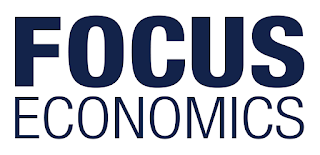The upward trend in Brent Crude Oil prices that started in mid-2017 remained intact at the outset of 2018, driven by strong fundamentals. Oil prices hit an over three-year high on 11 January. On 12 January, prices traded at USD 70.3 per barrel, which was up 8.3% from the same day in December. The benchmark price for global crude oil markets was 5.4% higher on a year-to-date basis and was up 27.8% from the same day last year. Oil supply remains limited by the successful agreement between OPEC and key non-OPEC countries to reduce oil production. In November, the latest month for which data is available, the conformity level reached 122%, the highest on record. Supply constraints in other oil-producing countries such as Venezuela are also putting a dent in global output. Strong global economic activity is propelling demand for oil, adding upward pressure on prices. On top of economic fundamentals, political developments have also played a role in the recent rally in oil prices. The anti-government protests in Iran that erupted on 28 December and renewed political tensions between Iran and the United States over economic sanctions helped push up oil prices in recent weeks. While oil prices are expected to remain at relatively high levels throughout this year, our analysts believe that they will decline slightly by the end of 2018. As a result, FocusEconomics panelists see prices averaging USD 62.0 per barrel in Q4 2018. For Q4 2019, they expect prices to average USD 64.8 per barrel. The current upward trend in oil prices translated into 8 panelists revising up their estimates for Q4 2018 from the previous month. 16 forecasters kept their projections unchanged, while no panelists cut their forecast. Although our panel largely believes that oil prices will remain at high levels towards the end of this year, on an individual basis they foresee some volatility going forward. The panelist forecast range for Q4 2018 runs from a maximum of USD 87.6 per barrel to a minimum of USD 52.0 per barrel.
WTI:
Oil markets remain in a sweet spot due to a combination of tighter global supply and resilient global economic growth. On 12 January, WTI Crude Oil prices traded at USD 64.2 per barrel, the highest level since December 2014. The print was 12.4% higher than on the same day last month and was up 6.2% on a year-to-date basis. The price was 21.1% higher than on the same day in January of last year. WTI Crude Oil prices continue to benefi t from a tighter global oil market. The successful implementation of OPEC’s oil cut deal and low production in some countries, such as Venezuela, are curbing global oil supply, exerting upward pressure on prices. The agreement by OPEC and key non-OPEC producers to the end of 2018 will help keep global oil supply limited this year. Moreover, resilient global growth is translating into stronger demand for the black oil. U.S. stockpiles declined by 4.9 million barrels in the week ending 5 January, the eighth consecutive weekly drop. Therefore, U.S. inventories reached 420 million barrels, sitting in the middle of the average range for this time of year according to the U.S. Energy Information Administration (EIA). The price spread between Brent and WTI Oil prices widened considerably in 2017 due to relatively lower crude oil prices in the United States, and this trend is expected to persist in 2018. WTI Oil prices have been rallying to three-year highs as reduced production and rosy demand buoy the market. That said, analysts are skeptical that oil prices can remain at this level to the end of 2018 as U.S. shale oil producers are ramping up output. For Q4 2018, analysts expect prices to average USD 58.7 per barrel. They see prices increasing to USD 61.4 per barrel in Q4 2019. In light of recent developments, 8 panelists upgraded their projections for Q4 2018 from last month, whereas 2 cut their forecasts. 11 forecasters left their projections unchanged. Despite the strength of the current upward trend in consumer prices, our panelists still foresee WTI Oil prices experiencing some volatility this year. For Q4 2018, the maximum price forecast is USD 78.4 per barrel, while the minimum is USD 48.0 per barrel.
Read more at Focus Economics.











